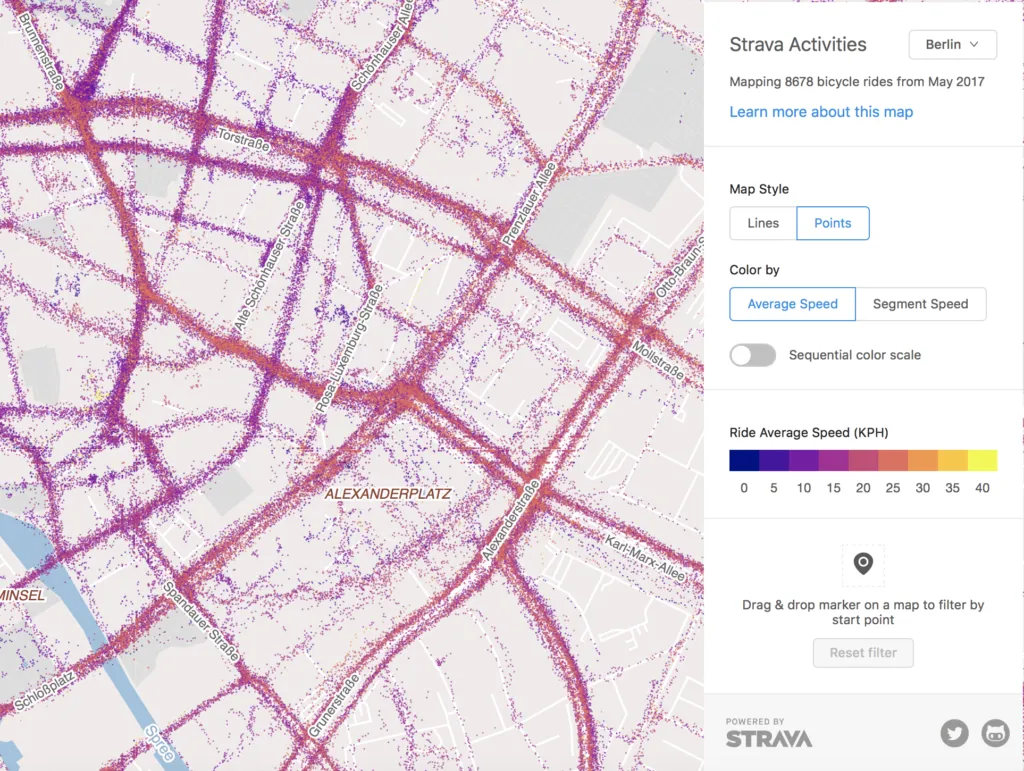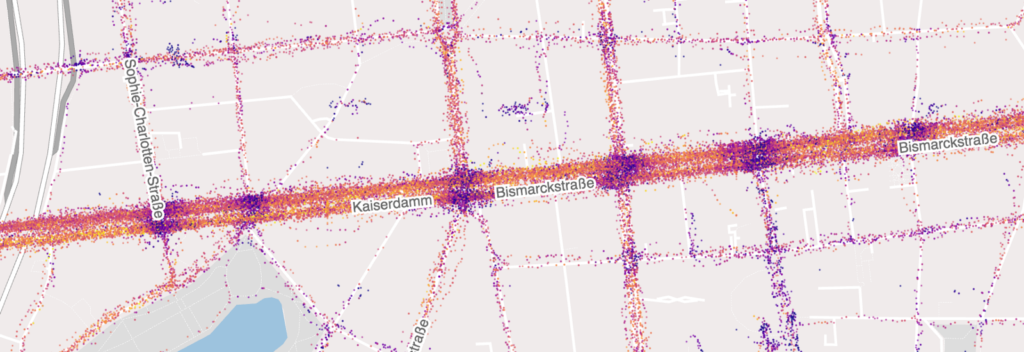
This visualization maps speed of thousands rides and runs
Strava is a popular cycling and running app that is known to the mapping community from its awesome heat map of rides and runs. It’s a great and useful tool, but it shows only a density of activities which can be interpreted as a popularity of a given location.
Vova Bilonenko – developer and cycling enthusiast, decided to explore what else could be extracted from GPS data available via Strava API. The result of this exercise is a map showing an average speed of all activities for any given place. On the example below you can see every traffic light on the way.
On the example below, you can see every traffic light on the way.
For now the map is available only for Berlin and Brussels but Vova is looking for suggestions for other cities to be added. Certainly a cool project.









